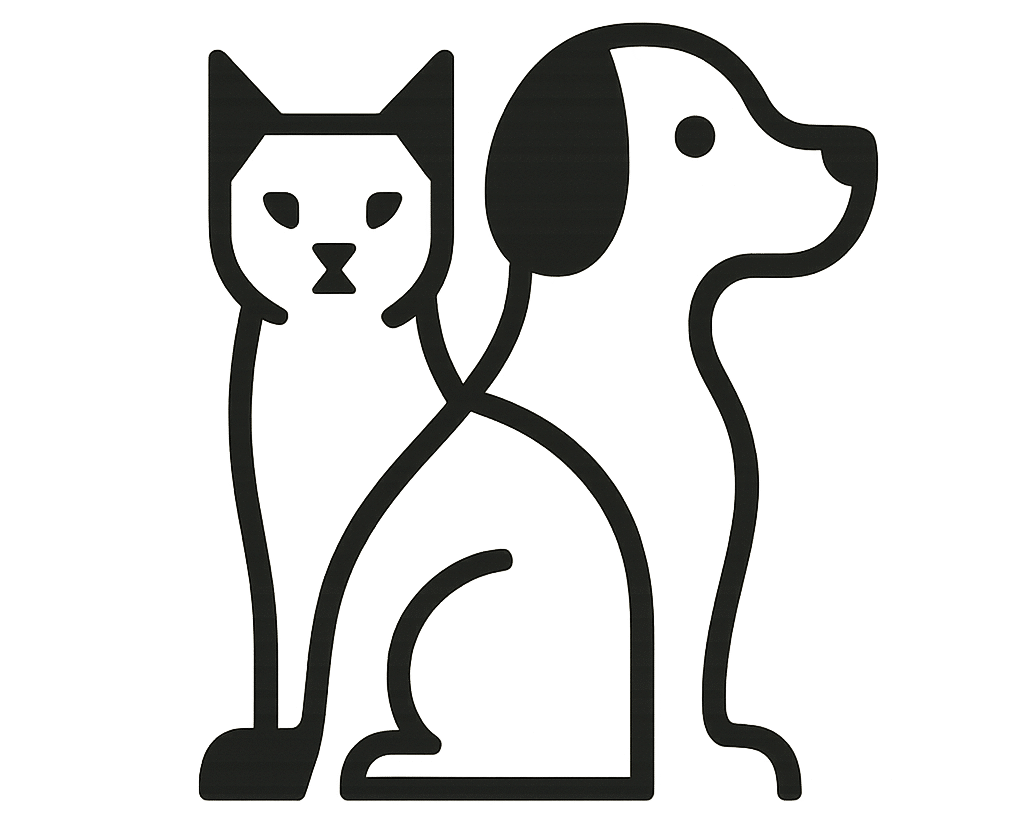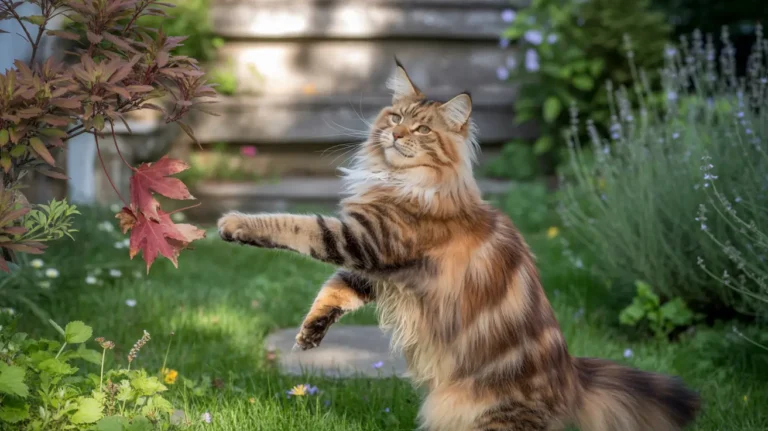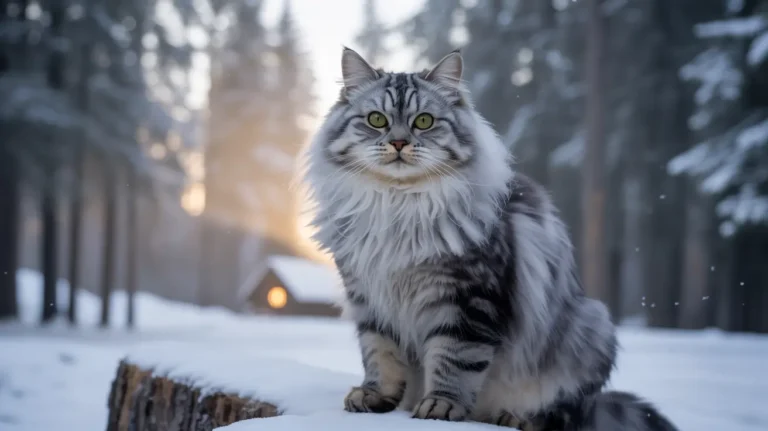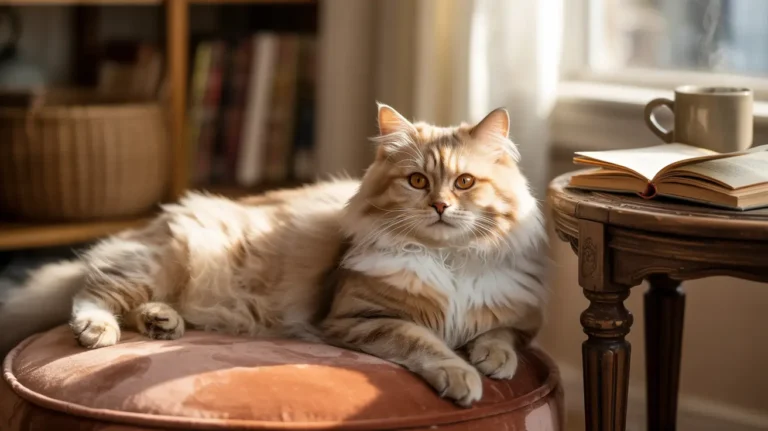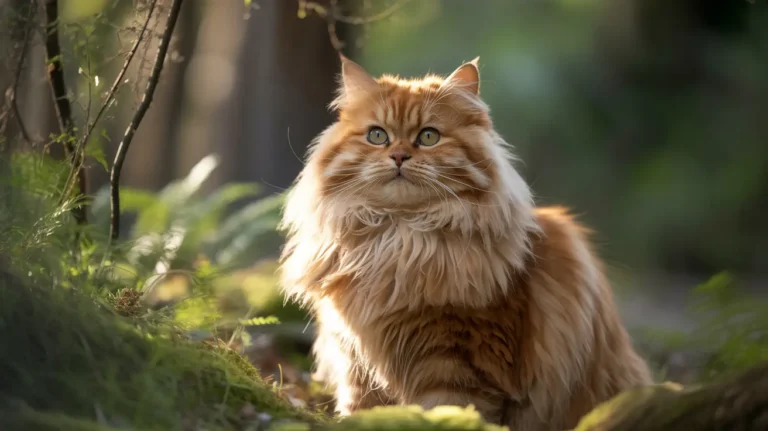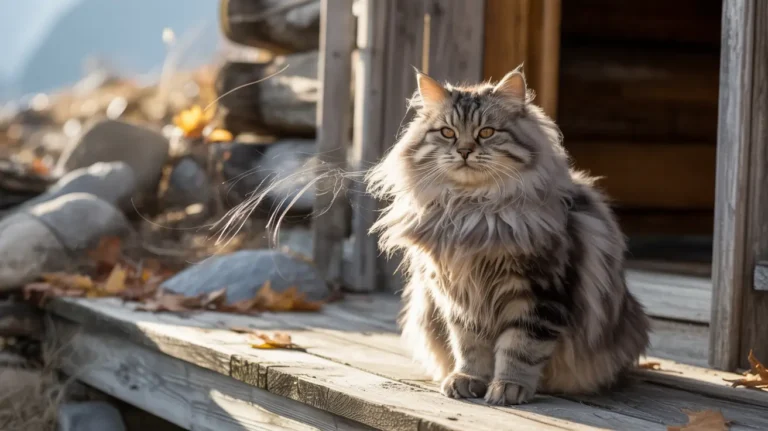Maine Coon Cat History: Rise of America’s Gentle Giant
The Maine Coon is not just a cat — it’s a living legend wrapped in fur. Known for its massive size, kind temperament, and shaggy coat, this breed has become one of the most beloved cats in the world.
But where did it come from? Its story is full of mystery, folklore, and fascinating twists that go back centuries. Let’s take a deep dive into the origins of America’s gentle giant.
A Breed Wrapped in Mystery
The Maine Coon is believed to be one of the oldest natural cat breeds in North America. It has strong ties to the state of Maine, where it earned a reputation for being a tough and reliable mouser.
However, its actual origin story remains a mystery, with no solid documentation to explain its inception. Over time, different theories and stories have emerged, and each adds its charm to this cat’s legend.
The Viking Connection
One of the most supported ideas is that Maine Coons are descendants of long-haired cats brought by Norse explorers. Vikings were known to sail with cats on board to control rodents on their ships.
Experts believe these long-haired cats may have bred with local short-haired cats in the New England area. This would explain the Maine Coon’s sturdy build, waterproof coat, and similarity to the Norwegian Forest Cat.
The resemblance is striking — both breeds have thick fur, large bodies, and strong paws built for climbing and snow.
The Marie Antoinette Legend
This is one of the most romantic stories tied to the Maine Coon’s past.
According to legend, French Queen Marie Antoinette attempted to escape to America during the French Revolution. She loaded her belongings — including her beloved long-haired cats — onto a ship headed for Wiscasset, Maine.
While she never made the trip, the cats did. They were released upon arrival and eventually bred with local cats. Over time, this crossbreeding may have contributed to the Maine Coon’s development.
The Wild Hybrid Myth
One of the oldest myths is that Maine Coons are part raccoon or bobcat. This belief likely came from their bushy tails and rugged, wild appearance. Some say the name “Coon” came from these imagined raccoon connections.
But science says otherwise. It’s biologically impossible for cats to breed with raccoons or wildcats. This theory has been completely debunked, though it still adds a fun layer to the breed’s folklore.
Early Sightings and Folklore in Maine
The Maine Coon is believed to have lived in New England for a long time — even before it was officially called a breed. In the 1800s, farmers and sailors told stories of large, fluffy cats that were great hunters and smart companions.
People noticed these cats were different from regular farm cats. Their big size, long fur, and friendly nature stood out. Locals started calling them “Maine cats.” Over time, these cats became part of local folklore, with many believing they were special or magical, especially because of how well they survived the cold Maine winters.
Development as a Distinct Breed
In the early 19th century, Maine Coons were still seen as farm or ship cats. But by the late 1800s, people began recognizing them as a separate breed because of their unique look and charm.
They weren’t bred in fancy programs at first — they developed naturally. Farmers likely didn’t plan their breeding, but these cats kept their strong build and thick fur over generations. Locals noticed these traits were staying the same, making the Maine Coon look different from other cats.
That’s how they slowly became more than just “big farm cats” — they became a breed.
Thriving in the Harsh New England Climate
One thing is certain: the Maine Coon adapted perfectly to Maine’s tough winters. Its thick, water-resistant coat helped it survive snow and rain.
Tufted paws worked like natural snowshoes, and the long tail could wrap around its body for warmth. These natural traits weren’t just random — they evolved out of necessity for survival.
The 1800s: From Barn Cat to Local Legend
By the early 1800s, the Maine Coon had become a popular farm cat across New England. It was valued for its hunting skills, especially for catching rats and mice in barns and ships.
Despite being a working cat, it quickly earned admiration for its beauty and personality. Locals began to tell stories about these big, fluffy cats. They started calling them “Maine cats” — a name that eventually became “Maine Coon.”
The Rise of Fame in Cat Shows
In the late 1800s, cat shows gained popularity in the United States, particularly in cities such as Boston and New York. One of the first famous Maine Coons was a cat named Captain Jenks of the Horse Marines, who stole the spotlight at these shows.
Maine Coons continued to excel in competitions due to their size, intelligence, and striking appearance. In 1895, a Maine Coon named Cosey won the top prize at America’s first major cat show at Madison Square Garden.
The Fall of a Favorite
Despite early success, the Maine Coon’s popularity started to decline in the early 1900s. This was largely due to the rise of exotic cat breeds, especially the Persian, which became the new favorite.
As Persians grew in popularity, the Maine Coon nearly disappeared from the spotlight — and almost went extinct.
Rescued by Passionate Breeders
Thankfully, cat lovers in Maine didn’t let the breed vanish. In the 1950s, a group of breeders formed the Central Maine Cat Club (CMCC) to preserve and promote the breed.
They hosted events, created awareness, and documented bloodlines to protect the Maine Coon’s legacy. Their work paid off. The breed began gaining attention again.
Why Is Maine Coon Cat History Full of Mystery?
The history of the Maine Coon cat is full of mystery because its true origins are not clearly documented. Many stories and legends try to explain where these large, fluffy cats came from.
Some believe they descended from long-haired cats brought by Viking explorers, while others tell a romantic tale of cats arriving with French Queen Marie Antoinette. There’s even a myth that they are part raccoon, which is impossible but adds to the intrigue.
This mix of facts and folklore makes the Maine Coon’s past fascinating and mysterious, keeping cat lovers curious about their gentle giant’s true story.
Official Recognition: A Big Win
In 1976, the Cat Fanciers’ Association (CFA) finally recognized the Maine Coon as a championship breed. Other international cat organizations soon followed, giving the breed global recognition.
Breed standards were set, celebrating the Maine Coon’s strong frame, large tufted ears, thick coat, and friendly nature. Since then, the Maine Coon has become a regular winner in shows around the world.
Recognition as State Cat: Symbolism and Significance
In 1985, the state of Maine made the Maine Coon its official state cat. This was more than a title — it was a way to honor the cat’s long history and strong ties to the state.
Locals saw the Maine Coon as a symbol of Maine’s strength, beauty, and survival. Its ability to live in harsh winters and still stay friendly and gentle made it a perfect match for the spirit of the state.
Today, the Maine Coon is not just Maine’s cat — it’s a part of its identity.
A Global Icon
What started as a rugged barn cat in New England has now become one of the most popular breeds worldwide. The Maine Coon consistently ranks in the top three cat breeds in the U.S., U.K., and several European countries. It’s loved not just for its size and coat, but also for its playful, dog-like personality.
Milestones in Official Recognition
The path to official recognition was not easy, but it was filled with determination and passion from the Maine Coon community.
CFA Recognition (1976)
After years of work, the Maine Coon was officially recognized as a championship breed by the Cat Fanciers’ Association in 1976. This was a huge win for the breed and for all the breeders who worked hard behind the scenes.
Global Attention
Other groups like TICA and international cat associations soon followed. This gave the Maine Coon a place in shows across the world. Judges began to look for their special traits — big body, tufted ears, and loving personality.
Recognition brought new respect and helped protect the breed’s future.
Historic Maine Coon Champions
Long before official titles and global fame, a few standout Maine Coons began making their mark in history.
Captain Jenks of the Horse Marines
In the late 1800s, this cat became one of the first famous Maine Coons. He was often seen at shows and admired for his striking looks and strong build.
Cosey — The First Winner
In 1895, Cosey won the top prize at America’s first major cat show in Madison Square Garden. Her silver tabby coat and calm nature made her a crowd favorite.
These cats helped prove that Maine Coons weren’t just farm cats — they were showstoppers, and their legacy still inspires breeders today.
From Rarity to Revival (1900–1970s Timeline)
This timeline shows how close the breed came to extinction — and how decades of quiet work brought it back. Each stage played an important role in keeping the Maine Coon alive.
Conclusion: More Than Just a Cat
The Maine Coon is more than a pet — it’s a piece of history. Its journey is nothing short of epic, from legends of Viking ships and French royalty to snowy barns and modern cat shows.
It stands today as a gentle giant with a rugged past, a loving heart, and a future full of admiration. Owning a Maine Coon means sharing your home with a breed that has survived centuries, crossed continents, and captured hearts across the world.
